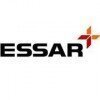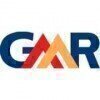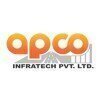Filter interviews by
Offshore Infrastructures Electrical Site Engineer Interview Questions and Answers
Offshore Infrastructures Electrical Site Engineer Interview Experiences
1 interview found
I applied via Naukri.com and was interviewed before Jan 2022. There were 2 interview rounds.

(2 Questions)
- Q1. Method of earthing? And type of tray And testing of equipment of panel etc.
- Ans.
Earthing method involves connecting electrical equipment to the earth to prevent electric shock and damage to equipment.
Earthing can be done through a rod, plate, or strip depending on the soil resistivity
Tray types include ladder, perforated, solid-bottom, and wire mesh
Testing of equipment involves checking insulation resistance, continuity, and polarity
Panel testing includes checking for loose connections, proper lab
- Q2. What is process of cabling .etc
- Ans.
Cabling process involves planning, routing, pulling, terminating and testing of cables.
Plan the cable routing based on the requirements and specifications
Pull the cables through the conduits or trays
Terminate the cables at both ends using connectors or terminals
Test the cables for continuity, insulation resistance and other parameters
Label the cables for easy identification and maintenance
Ensure compliance with safety
Interview Preparation Tips
Skills evaluated in this interview
Interview questions from similar companies

I applied via Campus Placement and was interviewed before Jun 2021. There were 2 interview rounds.
(1 Question)
- Q1. Tell about your self
Interview Preparation Tips

Electrical Engineer Interview Questions & Answers
Larsen & Toubro Limitedposted on 15 May 2021
I applied via Company Website and was interviewed in Nov 2020. There was 1 interview round.
Interview Questionnaire
3 Questions
- Q1. Electrical and electronics
- Q2. AC and DC
- Q3. Vibrator ,wilding machine,grander, starting vibrator,rccb ,plcb,elcb earthing
Interview Preparation Tips

Electrical Engineer Interview Questions & Answers
Larsen & Toubro Limitedposted on 21 Dec 2021
I applied via Campus Placement and was interviewed before Dec 2020. There was 1 interview round.
Interview Questionnaire
1 Question
- Q1. 1. Power factor of transformer 2. types of DC machine 3. Working principle of AC alternator 4. DC motors
- Ans.
The question covers power factor of transformer, types of DC machine, working principle of AC alternator, and DC motors.
Power factor of a transformer is the ratio of real power to apparent power.
Types of DC machines include DC motors and DC generators.
AC alternators work on the principle of electromagnetic induction to convert mechanical energy into electrical energy.
DC motors convert electrical energy into mechanical ...
Interview Preparation Tips

Electrical Engineer Interview Questions & Answers
Reliance Industriesposted on 4 May 2019
I applied via Approached by Company and was interviewed in Oct 2018. There were 5 interview rounds.
Interview Questionnaire
2 Questions
- Q1. Technical questions like transformer & transmission and distribution system
- Q2. Salary discussion.
Interview Preparation Tips
Experience: Aptitude, 60 questions 60 minutes
General Tips: Nice interview
This interview was a technical one but was majorly a stress test. It lasted for about 1 hour 10 minutes. The interviewer wanted to test both my knowledge and communication skills.
Skills: Communication, Body Language, Problem Solving, Analytical Skills, Leadership, Presentation Skills, Time Management, Decision Making Skills
Duration: 1-4 weeks

I applied via Campus Placement and was interviewed before Sep 2021. There were 3 interview rounds.
Just work with R.S. Aggarwal book
(3 Questions)
- Q1. Just read and practice basics strong and practice previous GATE QUESTIONS
- Q2. Intro abt ur self and family back ground Tell about your interest
- Q3. How much u know about our concern
(1 Question)
- Q1. Just be genuine and clear
Interview Preparation Tips

I applied via Company Website and was interviewed in Jul 2024. There was 1 interview round.
(2 Questions)
- Q1. Diploma Electrical
- Q2. Electrical engineering
Interview Preparation Tips
Diploma Electrical
3 year experience Electrical Sharma Fabricators pvt LTD
1 year experience Supervisor TATA motors Ltd Noida airport
Mobile XXXXX
Email id *****

(2 Questions)
- Q1. I am Sanjeeb kumar sahu qualification diploma electrical experience 4 yer megha engineering infrastructure odisha
- Q2. I am Sanjeeb kumar sahu qualification diploma electrical experience 4 yer megha engineering infrastructure

I applied via Approached by Company and was interviewed in Dec 2024. There was 1 interview round.
(2 Questions)
- Q1. Electrical questions
- Q2. Technical
Interview Preparation Tips
- Electrical Maintenance

I applied via TATASTEEL and was interviewed in Aug 2022. There were 2 interview rounds.

(3 Questions)
- Q1. What is your current company
- Q2. Tell What is logestic
- Ans.
Logistics is the process of planning, implementing, and controlling the efficient flow and storage of goods, services, and information.
Logistics involves activities such as transportation, warehousing, inventory management, and order fulfillment.
It ensures that the right products are delivered to the right place, at the right time, and in the right quantity.
Logistics plays a crucial role in supply chain management and ...
- Q3. How much your experience
Interview Preparation Tips
Offshore Infrastructures Interview FAQs
Tell us how to improve this page.
Offshore Infrastructures Interviews By Designations
- Offshore Infrastructures Piping Engineer Interview Questions
- Offshore Infrastructures Electrical Engineer Interview Questions
- Offshore Infrastructures Electrical Site Engineer Interview Questions
- Offshore Infrastructures Project Coordinator Interview Questions
- Offshore Infrastructures Project Executive Engineer Interview Questions
- Offshore Infrastructures Safety Officer Interview Questions
- Offshore Infrastructures Process Engineer Interview Questions
- Offshore Infrastructures QA QC Engineer Interview Questions
- Show more
Interview Questions for Popular Designations
- Site Engineer Interview Questions
- Civil Site Engineer Interview Questions
- Site Supervisor Interview Questions
- Senior Site Engineer Interview Questions
- Site Incharge Interview Questions
- Civil Site Supervisor Interview Questions
- Site Engineer Mechanical Interview Questions
- Senior Civil Site Engineer Interview Questions
- Show more
Offshore Infrastructures Electrical Site Engineer Interview Process
based on 1 interview
Interview experience
Interview Questions from Similar Companies
Offshore Infrastructures Electrical Site Engineer Reviews and Ratings
based on 4 reviews
Rating in categories
|
Mechanical Engineer
105
salaries
| ₹0 L/yr - ₹0 L/yr |
|
Safety Officer
79
salaries
| ₹0 L/yr - ₹0 L/yr |
|
Piping Engineer
67
salaries
| ₹0 L/yr - ₹0 L/yr |
|
Senior Engineer
49
salaries
| ₹0 L/yr - ₹0 L/yr |
|
QA QC Engineer
44
salaries
| ₹0 L/yr - ₹0 L/yr |

Larsen & Toubro Limited

Essar Group

Adani Group

GMR Group
- Home >
- Interviews >
- Offshore Infrastructures Interview Questions >
- Offshore Infrastructures Electrical Site Engineer Interview Questions



















